When I pick my two boys up from school, something funny happens. They keep talking about school. I hear stories of painting lessons, gardening, knitting class, drawing, singing, reading, writing and even…math (that, somehow, is learned through clapping and stomping).
The children take hikes in the golden grass covered foothills behind the school. On hot days, the boys come home covered in mud, a result of recess play devoted to gathering sticks and rocks from around the playground and building dams in the stream that runs through the school.
This year, my older son’s class is in charge of the school’s organic garden and chicken coop. Each week they harvest, and cook, something new from the garden, and the children proudly revel in the power of their creations.
When I was a child, I saw my own creative drive stunted, rather than cultivated, at school. Thankfully, I stumbled onto an alternative educational system called Waldorf almost a decade ago. But while I’d heard of it, I then had only a vague understanding of just what it is. Turns out, it worked for my children-and our family life has been enriched with festivals, art and music ever since.
The first Waldorf school was founded by Rudolf Steiner, an Austrian philosopher and social architect nearly a century ago. Shortly after World War I, the Waldorf cigarette factory, located in Stuttgart, Germany hired Steiner to found a school for the children of its workers.
Today, 950 Waldorf Schools in 80 countries take a holistic approach to educating children-meaning the curriculum not only encourages students academically, but focuses on the development of the students’ overall being-integrating practical, artistic and intellectual elements into the teaching of all subjects.
So how does Waldorf’s academics stack up against traditional schooling methods? Knitting and mud play is all well and good, but what do children learn in a Waldorf classroom?
Direct academics are not introduced in the Waldorf curriculum prior to age six or seven. Steiner believed awakening the cognitive functions before the neurological changes that occur at the end of early childhood could actually be counterproductive to learning. Once the children hit first grade they are off and running-though not on a conventional academic treadmill.
Children begin to read later (they typically read fluently by the end of third grade). Letters are introduced one by one in the form of pictures. The letter “C” might be drawn as the curved tail of a cat. “K” could be a drawing of a knight, with each child drawing these pictures into their notebooks.
Children are taught simple addition, subtraction, multiplication and division in first grade, and learn to do it in their heads starting in second grade; the math program at a Waldorf school is actually accelerated compared to traditional education (those worried that their children’s business skills might suffer in a Waldorf classroom, take heart).
While children are encouraged to develop at a relaxed pace (no testing!) they are challenged daily, with teachers instructing in two foreign languages starting in first grade. While academics are made magical, they are rigorously instructed in a teacher-directed manner. Waldorf education is child centered, but not child-initiated.
At our Shining Mountain Waldorf School in Boulder, Colorado, students have the same teacher from first through fifth grades. Classes are tight knit, with teachers often becoming something of a co-parent of each child-monitoring the child’s academic, social and emotional development year after year.
Overall, seasonality, rhythm and routine provide the backdrop for Waldorf education, and the celebration of festivals holds a key place in the curriculum. Steiner incorporated the observance of many ancient holidays and customs into the Waldorf program. Waldorf school rituals are deeply connected to nature-many of the festivals honor the passing of seasons.
My favorite winter festival is Santa Lucia Day, which takes place December 13th (by the unreformed Julian calendar, the longest night of the year). “Lucia” translates to Lucy, which means light, as in lucid. She is the saint of radiant clarity on the shortest day and darkest night of the year.
At school, this is a festival to behold. The second graders dress up in white robes and make the rounds of campus singing the Santa Lucia song. They visit each class from the kindergarten to 12th grade, proudly delivering tea and homemade cookies in the shape of little stars.
As with everything that Shining Mountain does, a great deal of care goes into the foods we feed the children. We used this recipe for the organic, naturally sweetened, gluten-free cookies that the second graders served last year. They are easy to prepare and better yet, these little star cookies make for delicious treats that celebrate the brilliance of the dark winter season.
Star Cookies
>> 2 ½ cups organic almond flour
>> ½ teaspoon celtic sea salt
>> ¼ teaspoon baking soda
>> 1 teaspoon cinnamon
>> ½ cup grapeseed oil
>> 5 tablespoons agave nectar
>> 1 tablespoon vanilla extract
In a large bowl, combine almond flour, salt, baking soda and cinnamon. In a smaller bowl, mix together grapeseed oil, agave and vanilla. Mix wet ingredients into dry, then chill dough in refrigerator for one hour. Place dough in between two large pieces of parchment paper and roll out until ¼ inch thick. Remove top piece of parchment paper and cut out cookies with a small star cutter. Using a metal spatula, place stars on a parchment lined baking sheet. Bake at 350 degrees until lightly browned around the edges, 7-10 minutes. Cool completely, prior to handling cookies.
Elana Amsterdam is a former yoga teacher and founder of ecosav.com and elenaspantry.com



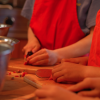
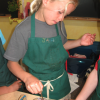
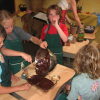
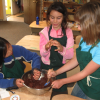
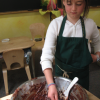
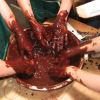
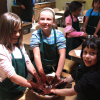
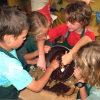
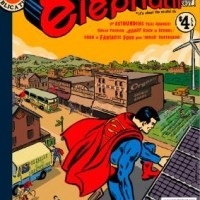



Read 7 comments and reply